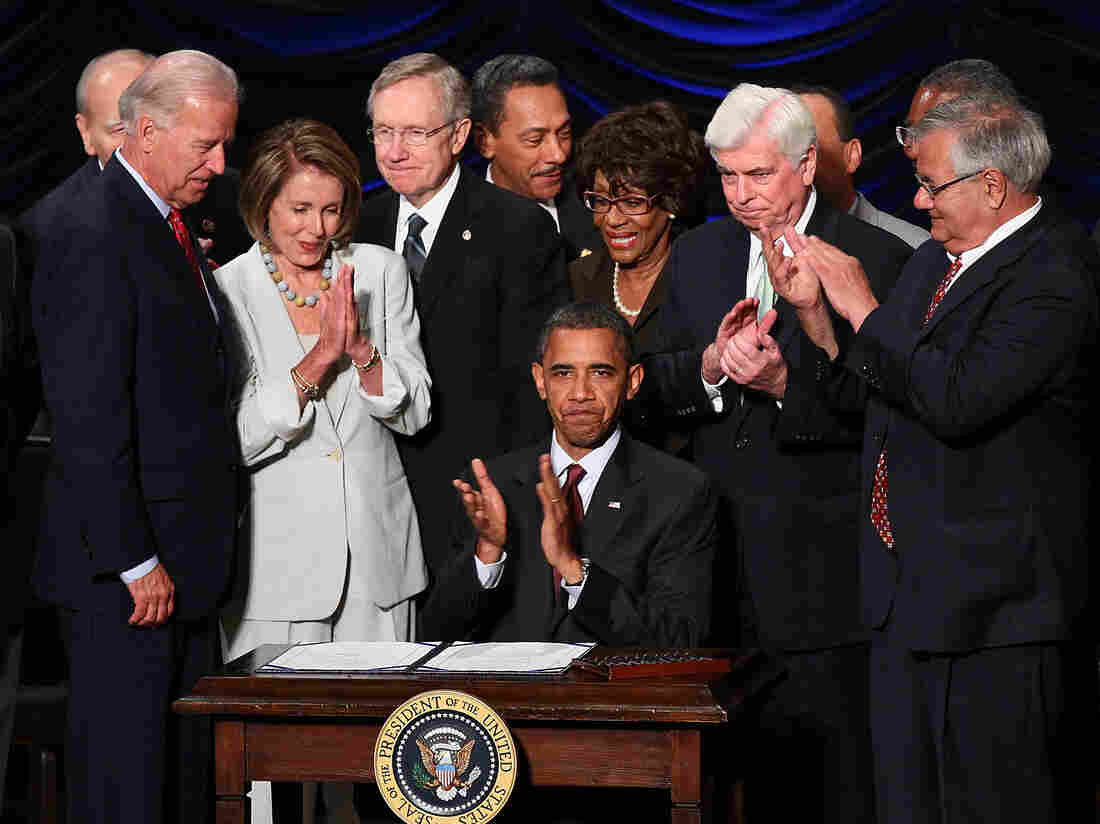Falling Stars: Negative Yelp Reviews Target Trump Restaurants, Hotels
The Trump Grill at Trump Tower in New York City in December. Now that Donald Trump is president, online reviews of his hotels, restaurants and other properties have become much more politicized.
Jim Watson/AFP/Getty Images
hide caption
toggle caption
Jim Watson/AFP/Getty Images
After purportedly stopping in at Mar-a-Lago, President Trump’s Palm Beach resort, not long ago, a visitor went straight to Google’s online review site to complain about the restaurant ambience.
“Very loud and distracting dinner atmosphere,” the visitor noted. “I just wanted a quiet peaceful meal, but White House staff and diplomats at the next table kept shouting out classified information.”
People who dislike Trump politically have found a new way of venting their fury and in the process perhaps hitting him in his wallet: They can leave a lousy review on sites such as Yelp, TripAdvisor and Google.
Of course there are also plenty of pro-Trump reviews from Trump fans. But since Trump’s nomination at the Republican convention last summer, negative reviews on Yelp and Google have begun outpacing positive reviews by a factor of 6 to 4, says Signpost, a marketing software company.
Some of the reviews are funny; others, just nasty.
“Not a pleasant experience,” noted one person about the Trump International Hotel & Tower in New York. “I felt like I was going to be groped the whole time.”
“The person who runs these hotels is a giant racist which is pretty ironic for someone who is Orange-American. Would not recommend,” said another.
It’s not just that some of the reviews are snarky. More and more users have also been giving Trump’s U.S. hotels and restaurants one-star ratings, Signpost says.
“In February, in particular, we saw a spike in one-star reviews. There were about 160 one-star reviews written for Trump properties in the month of February alone,” noted Stuart Wall, Signpost’s founder and CEO.
For the Trump Organization, which didn’t return requests for comment for this story, that’s a potential cause for concern.
People who don’t even read reviews nevertheless may rely heavily on ratings systems to choose hotels and restaurants, research suggests. In fact, many people shopping for hotels begin by looking at the highest-ranked properties, which puts those farther down the list at a disadvantage.
Harvard Business School professor Michael Luca studied the impact of a Yelp ratings downgrade on restaurants in Seattle between January 2003 and October 2009.
“For independent restaurants, Yelp ratings matter a lot,” he concluded. “A one-star increase maps to about a 5 [to] 9 percent increase in sales.” He cautions that the impact is not as strong for chain restaurants and for well-known brand names, which certainly includes Trump.
For its part, Yelp tries to protect the integrity of its content by using humans to weed out politically tinged reviews.
For example, a banner is now posted on the page for Trump SoHo New York warning, “This business is being monitored by Yelp’s support team for content related to media reports.”
The site also uses software that “takes a whole number of factors into account as to whether we should trust or rely on that content, based on how much we know about that user,” says Vincent Sollitto, Yelp senior vice president.
But not all review sites use such software and even if they do, no program can screen out all politically motivated content.
Still, all is hardly lost for the Trump Organization, Luca says.
He notes that the company has talked about building more properties in the U.S. and abroad, and recently doubled the Mar-a-Lago initiation fee. That suggests that for Trump, the benefits of being president still outweigh the disadvantages.
“It seems that at least Trump thinks that the benefits of the brand-building of being president [have] a bigger effect than any negative effect that might be coming through an influx of negative reviews,” he says.












